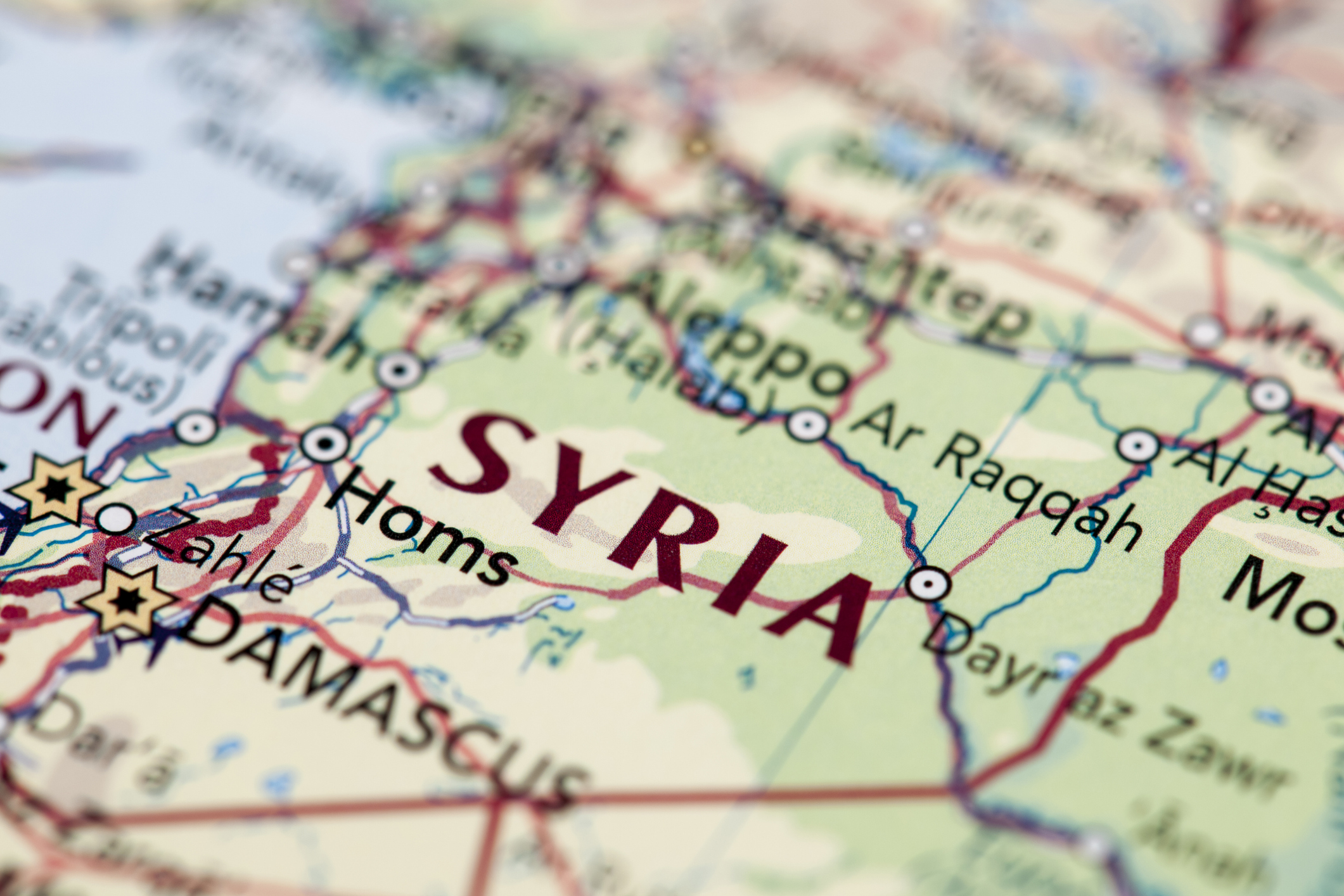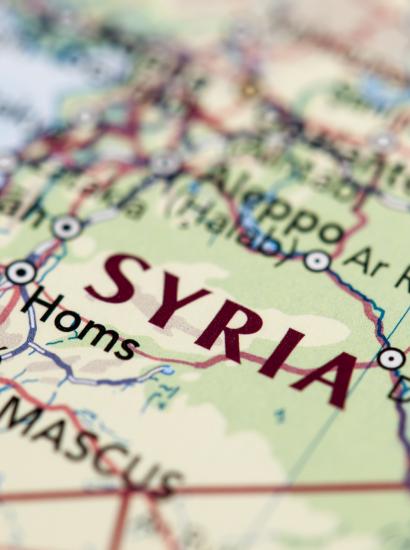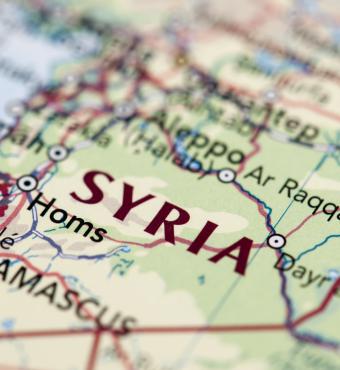- International Affairs
INTRODUCTION: As discussed in my September essay for The Caravan, “Lessons from Past Diplomacy with Russia Concerning Syria and the Implications for US Policy Today,” Syria remains a frozen conflict, and a failed state, after now twelve years of civil war and massive external intervention. While this stalemate may arguably advantage U.S. and western interests (block a geostrategic victory for Russia in a central Arab state, stymie Iranian expansionist ambitions, keep Islamic State terrorists under pressure), the humanitarian costs remain significant, and the stalemate is not stable. Recent threats- from a possible new Turkish incursion to Russian objections to cross-border humanitarian assistance, an uptick in Israeli bombings, to attacks on U.S. forces by pro-Iranian elements- underline the risks inherent in the current U.S. policy, a policy which is ambivalent at best and lacks sufficient highest-level engagement.
But as soon as one considers ways out of this stalemate, problems arise which have bedeviled prior efforts for a solution. Nevertheless, an inventory of alternative solutions can help focus attention within the Biden administration, Congress and the Washington policy community, and among interested audiences in international organizations, Europe, and the Middle East. To better analyze these alternative solutions, first consider the strategic landscape within which any of them would operate.
In the initial phase of the Syrian civil war between Assad and much of the country’s Sunni Arab majority, the U.S., Turkey, and Arab states intervened to overthrow Assad. When Iran and Russia came to Assad’s aid in 2014, that effort was defeated. Assad, while he has not won, is no longer in danger of being driven militarily from power.
Nonetheless, the manner in which Assad and his allies pursued the conflict produced a series of international ‘spillovers’ that then spurred new military interventions in Syria by the U.S., Turkey, and Israel, and strengthened international economic and diplomatic isolation of the Assad regime. These spillovers include the rise and continued resiliency of the Islamic State (IS) terrorist group, the deployment of Iranian/Hezbollah strategic rocket systems, and the expansion of the Turkish Kurdish terrorist PKK organization’s YPG offshoot. Additionally, half the Syrian population has been put to flight – six million as refugees and six million as Internally Displaced Persons. The cost to the international community and neighboring host states has been at least $70 billion since 2011. Enclaves controlled by the U.S., Turkey and their allies have been created in the northeast, northwest, and at Al Tanf. All the while, the international community is calling for accountability for the Assad regime for the refugees, IDP’s, the use of chemical weapons, 650,000 dead, and 130,000 missing and imprisoned.
The cumulative effect of these spillovers, and the international community’s responses to them, have produced a frozen conflict and failed state. At the same time, particularly after the Ukraine war began, the Syrian conflict has emerged as a strategic competition between a broad Western grouping, including the U.S., EU, Arab League, Turkey, Israel, Syrian Opposition, and the American YPG allies renamed the Syrian Defense Forces (SDF), on one side, and the Assad regime allied with Iran and Russia on the other. The battle is for the strategic heart of the Middle East. Were Russia or Iran to win, the long-standing regional collective security system anchored by the United States would be undercut.
The cumulative effect of the responses of the international community has produced the following dynamic: the broad “Western” grouping seeks a compromise resolution of the civil war under UNSCR 2254 (2015), along with solutions to the spillover impacts, and avoidance of a strategic loss. For its part the Assad regime and allies seek reversal of the Assad regime’s failed state status, a return to ‘normalcy’ under Assad or another regime friendly to its allies, avoidance of a strategic loss at a minimum, and if possible, a strategic win. This is all further complicated by internal divisions about priorities within both ‘sides.’
Following are the five possible Syria solutions most often debated and in some cases attempted.
US Withdrawal, Broad Western Grouping Withers
This scenario would flow from either a unilateral American decision to withdraw, or outside pressure from either pro-Iranian militias who frequently attack U.S. positions, or a Turkish incursion in the northeast which would undercut the U.S.-SDF partnership. The first alternative is unlikely. Following the Afghanistan withdrawal, the Biden administration will be cautious about any further moves that resemble that disaster, particularly as the Syria campaign has been a low-cost, high success operation.
The U.S. also would be very reluctant to pull out under military pressure from the Iranians and their proxies. Were the Turks to launch a large-scale ground incursion into the northeast to defeat the SDF, the U.S. would be forced as in October 2019 to respond with either massive diplomatic or, far less likely, military pressure on the Turks, or withdraw. Russian officials have at least considered green-lighting a Turkish operation for exactly this purpose, but, at the moment, the chances of Moscow doing so are slim.
Collapse of Assad State, and/or Withdrawal by Russia/Iran
Assad has a long history of maintaining himself and his regime in power in the face of overwhelming obstacles and threats. Furthermore, Moscow and Teheran would press him or an accommodating successor to stay the course. Neither the Russians nor Iranians are likely to pull out. Syria is important to both as they have significant sunk costs, while their current military and financial burdens in Syria are easily manageable.
Step By Step Comprehensive Resolution
Both the Obama and Trump administrations attempted a step-by-step comprehensive resolution to the crisis in Syria through the Russians. The Ukraine War, however, has frozen those discussions, although UN Special Syria Envoy Pederson is pursuing a similar approach. The concept is for Assad to rectify specific spillover issues in return for which the U.S., UN, and other outside actors would reverse sanctions, diplomatic isolation and military operations and enable the gradual return of Syria from failed state to normalcy.
Under such a scenario, neither side scores a strategic win. Assad and his partners gain a ‘stable’ Syria in return for progress reversing the destructive and criminal actions of the regime mentioned above. Assad, however, has rigidly refused to make any concessions even when tempted by early recovery projects and sanctions waivers. The difficulty that any one overall negotiator faces, be it the U.S. or the UN, in coordinating the step-by-step reversals of actions of numerous states has also helped keep Syria in that ‘failed state’ status.
Individual Deals with the Assad Regime
This approach advocated by some Arab states and considered at times by Washington and Jerusalem envisions “separate peaces” between elements of the broad Western grouping and Assad. They would involve “one off’s”, e.g., a concession by Assad and allies on an issue such as withdrawal of Iranian strategic rockets, cooperation against the YPG/SDF, or, eyed at times by Washington, prioritization to fighting IS. In return, country ‘X” or “Y” would accommodate Assad concerns, by withdrawing forces, lifting sanctions, or otherwise embracing the regime.
There are serious problems with this approach, beginning with the record of failure, from a 2018 American-Jordanian-Israeli-Russian deal involving southwest Syria to Jordan opening its border and UAE diplomatic initiatives. None have produced real concessions by Assad. Under such circumstances, these initiatives would simply open the path to victory for Assad and his allies. Furthermore, any significant rehabilitation of Syria requires a comprehensive approach in which all those countries now exerting some sort of pressure on the regime were to relax that pressure more or less simultaneously.
Continuation of the Frozen Conflict
Such an approach, given the relative calm on Syrian battlefields, appears a “least bad” solution leaving the door open for other options at a more favorable time. Such ‘neither win nor lose’ solutions are not uncommon in strategic competition, from Berlin to Korea to Ukraine after the 2014 intervention. But like the latter, such temporary solutions can break down before a solution is found. With Syria, those risks include a new Turkish ground intervention, conventional or chemical weapons attacks by Assad, escalation of the Israeli air campaign, new refugee flows or donor and host fatigue with them, an escalation of tensions between Iran and the U.S., or the resurgence of the Islamic State.
While mechanisms to avoid these risks exist, a strong case could be made for the U.S. and partners to seek other options more seriously.

















